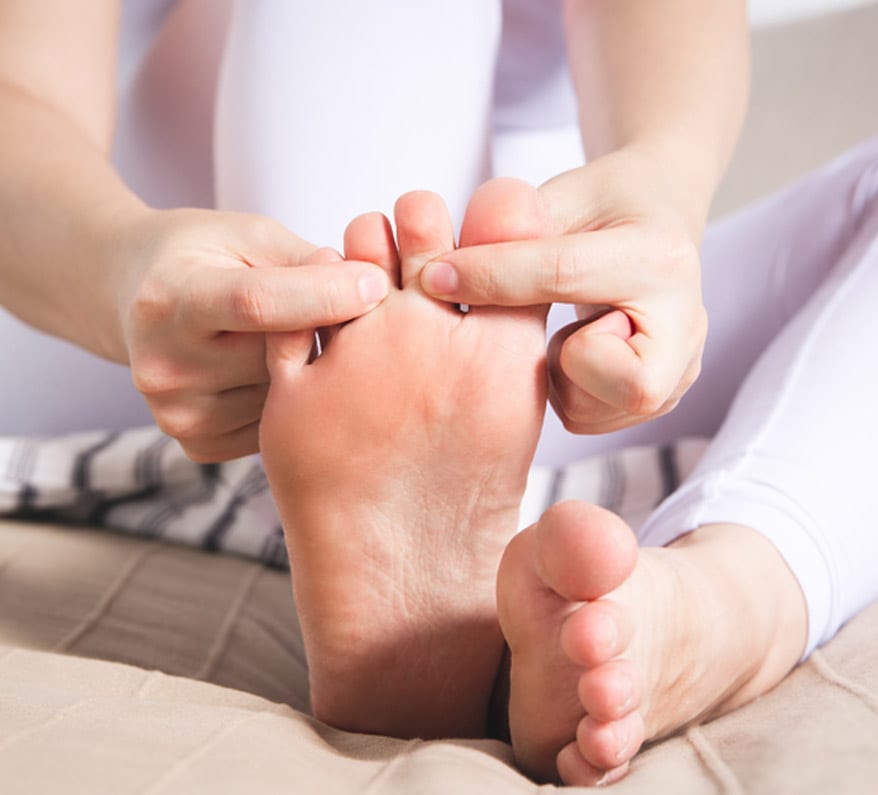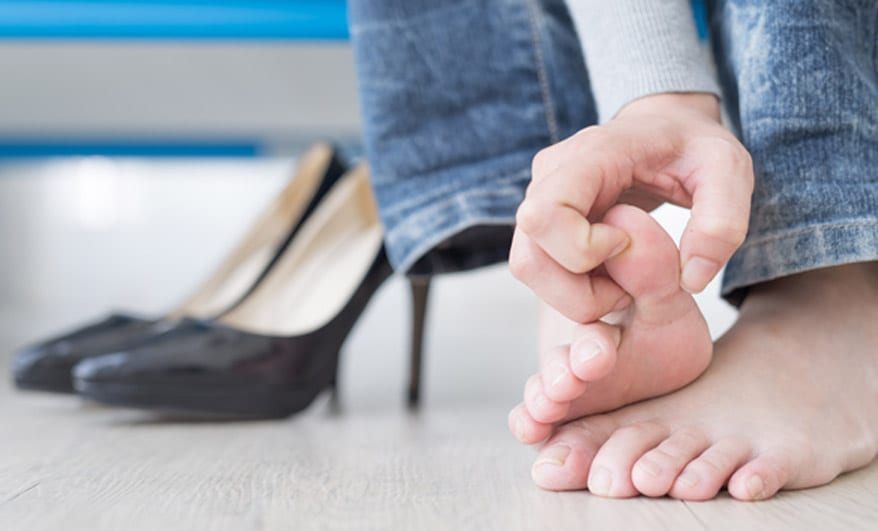
Hammertoe is a foot deformity in which the middle joint of a toe has an abnormal bend, caused by an imbalance in the muscles, tendons or ligaments responsible for holding the toe straight. Hammertoe typically occurs in the second, third and fourth toes.
Signs and Symptoms
A hammertoe can be difficult or painful to move. Left untreated, the tendons in the hammertoe may contract and tighten, causing the toe to bend permanently. Shoes may rub against the raised portion of the toe and cause corns and calluses.
What Causes Hammertoe?
The deformity may be caused by:
- Foot structure — foot imbalance
- Trauma — stubbing, jamming or breaking a toe
- Types of shoes — high-heeled shoes or very narrow and tight shoes that keep the toes from lying flat
- Certain disease processes
Risk Factors
The following factors increase the risk of developing hammertoes:
- Older age
- Being female
- Having a second toe that is longer than the big toe
- Arthritis and diabetes
- Genetic predisposition


How to Prevent Hammertoes
Wearing properly fitting shoes is a simple way to reduce the risk of hammertoe. When buying shoes, it’s important to:
- Avoid shoes with pointed toes
- Avoid high heels
- Consider laced or strapped shoes
- Buy shoes that fit comfortably
How Hammertoe is Diagnosed
During an initial visit to the doctor’s office, the physician will examine the hammertoe and order an X-ray to get a better picture of the bones and joints of the feet and toes.
Treatment Options
If the patient is able to move the toe, the doctor will recommend wearing roomier and more comfortable footwear, in addition to using inserts or pads to reposition the toe and relieve pressure and pain. The doctor may also suggest the patient perform exercises, such as picking up marbles or crumpling a towel with their toes, to stretch and strengthen the toe muscles.
If these nonsurgical treatments fail to alleviate pain and correct the hammertoe, then the patient will likely need surgery to release the tendon that is preventing the toe from lying flat. Severe cases of hammertoe may require surgery that involves removing a piece of bone to straighten the toe.
Questions To Ask During An Appointment
Patients with hammertoe should ask their physician the following questions during an appointment:
- What is causing my hammertoe?
- What tests should be performed to diagnose my condition?
- Is my condition treatable? Is it temporary or chronic?
- What course of treatment do you recommend?
- What are my alternative options?
- Am I a candidate for surgery? What will the recovery process look like?
- Do I need to see a specialist?
- Where can I find more information about my condition?
Questions The Physician Will Ask During A Visit
A physician may ask the following questions:
- How long have you had this foot problem?
- How much pain are you experiencing in your feet or toes?
- Where do you feel pain?
- What do you do to relieve pain or alleviate symptoms?
- What makes your pain or symptoms worse?
- What types of shoes do you wear?


